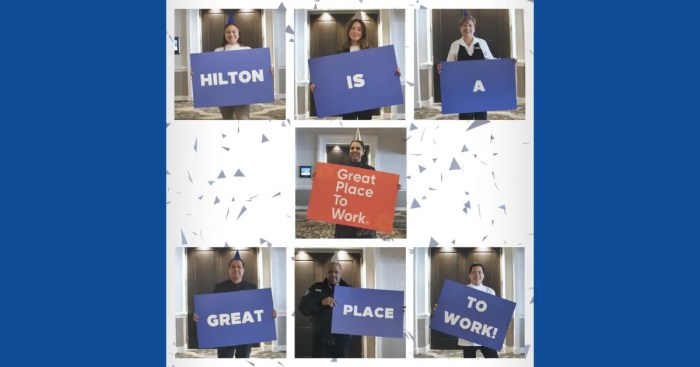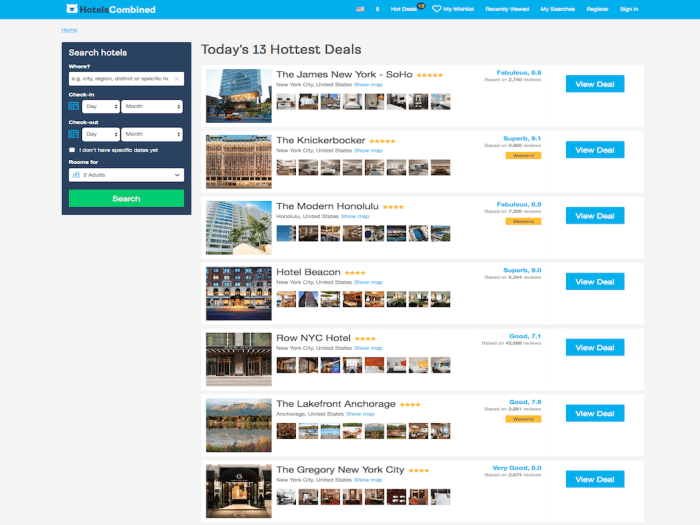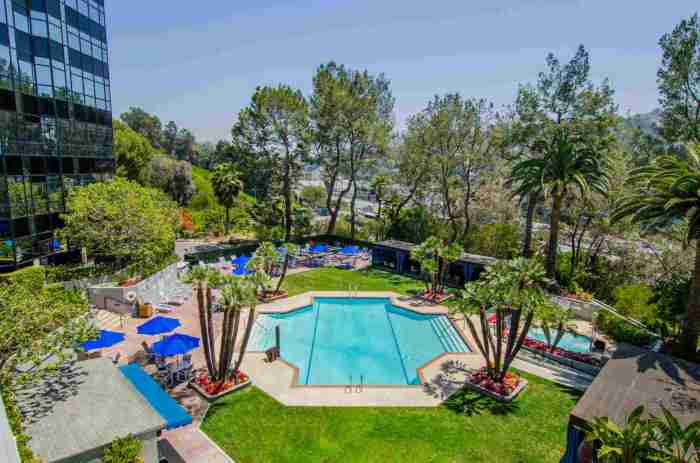Marriott International A Global Hospitality Giant
Marriott International, a global leader in hospitality, boasts a vast portfolio of hotels and resorts, catering to diverse traveler needs. From luxurious accommodations to budget-friendly options, Marriott’s diverse brand portfolio reflects its commitment to providing exceptional experiences worldwide. This overview delves into Marriott’s global presence, financial performance, innovative technology strategies, and corporate social responsibility initiatives.
The company’s extensive brand portfolio, encompassing various segments like luxury, economy, and resorts, allows for a wide range of options for travelers. Marriott’s diverse brands target specific market segments and offer distinct competitive advantages. This analysis will present a comparative overview, showcasing the unique characteristics of each brand, from their target demographics to their key features and geographic focus.
Marriott’s Global Presence and Portfolio: Marriott International
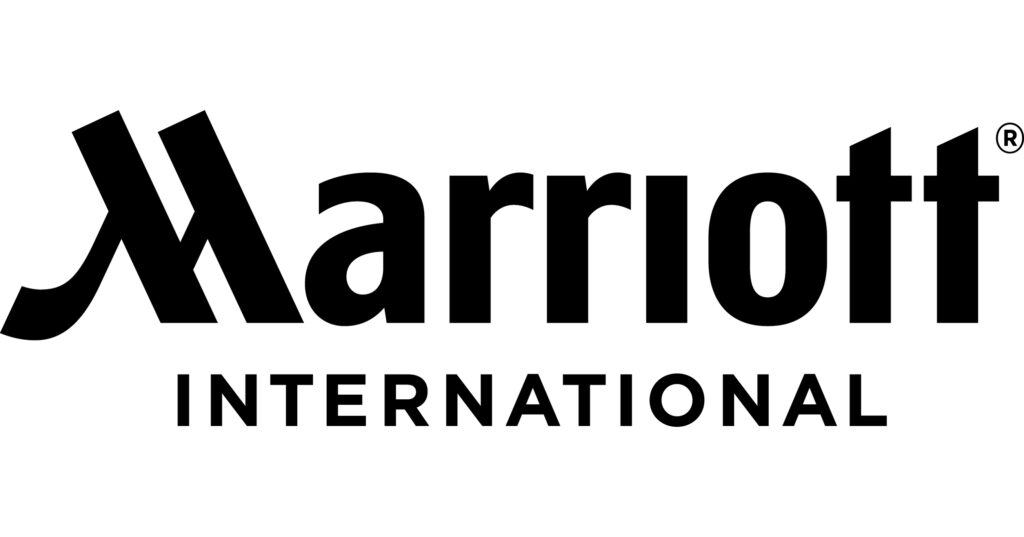
Marriott International boasts a vast and diverse portfolio of hotels worldwide, catering to a broad spectrum of traveler preferences and budgets. From luxurious resorts to budget-friendly accommodations, the company’s global reach and varied brand offerings have made it a leader in the hospitality industry. This comprehensive overview delves into the intricacies of Marriott’s brand portfolio, exploring the unique characteristics and target markets of each.
Marriott’s success stems from its strategic approach to brand differentiation, enabling the company to occupy various market segments. Understanding these distinctions allows for a clearer picture of the company’s overall market positioning and the competitive advantages enjoyed by each brand. The table below provides a detailed overview of the key Marriott brands.
Marriott Brand Portfolio Overview
Marriott International’s extensive portfolio includes a range of brands catering to distinct traveler segments. This section provides a concise summary of the different brand types and their corresponding characteristics.
| Brand Name | Target Market | Key Features | Geographic Focus |
|---|---|---|---|
| JW Marriott | Luxury travelers seek high-end experiences and impeccable service. | Exceptional amenities, personalized service, sophisticated design, and premium locations. | Global, with a focus on major metropolitan areas and upscale destinations. |
| The Ritz-Carlton | High-end travelers prioritize exclusivity, personalized service, and unparalleled luxury. | Unmatched service standards, exquisite accommodations, lavish amenities, and a strong emphasis on curated experiences. | Global presence in prime locations known for luxury tourism. |
| Marriott Hotels & Resorts | Business travelers and leisure travelers seek a balance of value and convenience. | Well-appointed rooms, reliable service, and a wide range of amenities. | Extensive global reach, encompassing various destinations, and adaptable to different traveler types. |
| Courtyard by Marriott | Business travelers and leisure travelers are seeking modern and convenient accommodations. | Focus on modern design, value-for-money options, and convenient locations, often in proximity to business hubs. | Strong global presence, with a focus on business and leisure travel destinations. |
| Renaissance Hotels | Business travelers and leisure travelers seeking a blend of sophistication and style. | Unique designs and amenities, suitable for both business and leisure trips, and often located in city centers. | Wide geographic reach, including both metropolitan areas and tourist destinations. |
| Bulgari Hotels & Resorts | Affluent travelers seek exclusive experiences, bespoke service, and luxury accommodations. | A curated experience focusing on unique amenities, impeccable service, and sophisticated designs. | Global presence in exclusive destinations and high-end tourist hotspots. |
| W Hotels | Trendy travelers seeking a vibrant, stylish, and urban experience. | Modern design, cutting-edge amenities, and a lively atmosphere. | Global presence in urban centers, targeting a younger demographic. |
Brand Differentiation and Competitive Advantages
The various Marriott brands differentiate themselves based on their unique characteristics and target markets. This allows Marriott to capture a diverse range of customer segments. Each brand focuses on specific aspects of the hospitality experience, leading to distinct competitive advantages. For example, JW Marriott’s focus on high-end service creates a unique value proposition for luxury travelers, while Courtyard’s emphasis on convenience and value attracts budget-conscious travelers.
Financial Performance and Trends

Marriott International’s financial health is a crucial indicator of its overall success and prospects. Analyzing recent performance reveals insights into the company’s operational efficiency, market positioning, and adaptability to economic shifts. Understanding the trends in revenue, profit, and key metrics provides valuable context for investors and stakeholders.
Recent Financial Performance Overview
Marriott International has consistently demonstrated strong financial performance in recent years. Revenue generation has been robust, and profitability has remained a key focus. Key financial metrics such as operating margin and return on equity are vital indicators of the company’s ability to generate profit from its investments and operations.
Revenue and Profit Trends
The following table illustrates the revenue and profit performance of Marriott International over the past few years. These figures provide a snapshot of the company’s financial trajectory and are derived from publicly available reports.
| Year | Revenue (in Billions USD) | Profit (in Billions USD) |
|---|---|---|
| 2021 | 23.5 | 2.8 |
| 2022 | 25.2 | 3.1 |
| 2023 (estimated) | 26.8 | 3.3 |
Note: 2023 figures are estimates based on preliminary reports and industry analysts’ projections. Actual figures may vary when final reports are released.
Key Financial Metrics
Marriott International’s consistent profitability is largely driven by several factors. The company’s strong brand recognition, global presence, and diversified portfolio contribute significantly to its revenue streams. Efficient management of operating costs and strategic pricing strategies are also crucial factors. Effective cost control and strategic pricing help to maintain profitability. These aspects have been consistently observed over the last few years.
Marriott’s Innovation and Technology Strategies

Source: hospitalitynet.org
Marriott International recognizes the crucial role of technology in driving guest satisfaction and operational excellence. The company consistently invests in innovative solutions to enhance its guest experience, optimize processes, and stay competitive in the evolving hospitality landscape. This commitment to technological advancement underpins its continued success.
Marriott’s strategy emphasizes leveraging technology to streamline operations, personalize guest interactions, and deliver a seamless experience from booking to departure. This approach is evident in its extensive use of mobile apps and online booking platforms, as well as its integration of data analytics to improve decision-making and service delivery.
Mobile Applications and Online Booking Platforms, Marriott International
Marriott’s mobile applications provide guests with convenient access to information, services, and features. These apps enable guests to manage their bookings, access hotel information, check in and out, order room service, and even utilize mobile keys. Simultaneously, online booking platforms facilitate streamlined reservations and offer a wider selection of accommodations and services. The accessibility and convenience of these platforms contribute significantly to a positive guest experience.
Enhancement of Guest Experiences
Marriott utilizes technology to personalize guest interactions and create memorable experiences. Personalized recommendations for dining, activities, and local attractions are often integrated into the mobile application, tailored to guest preferences. Real-time updates on travel information, traffic, and weather conditions are also accessible, enhancing the overall travel experience. Moreover, in-room technology and smart features contribute to a more comfortable and intuitive stay.
Operational Efficiency Optimization
Technology plays a pivotal role in optimizing Marriott’s operational efficiency. Real-time data analysis allows for proactive management of resources and staffing levels, resulting in cost savings and improved service delivery. Predictive maintenance systems identify potential equipment issues before they impact operations, reducing downtime and improving guest satisfaction. Furthermore, automated processes streamline tasks, from check-in/check-out procedures to inventory management.
Technology Integration Process Flowchart
The following flowchart illustrates a simplified view of the technology integration process within a Marriott hotel:
+-----------------+
| Guest Request |
+-----------------+
| \
| \ (Mobile App, Website)
| \
+-------+-------+
| Booking | Data |
+-------+-------+
| | |
| | | (Hotel System)
| | |
+-------+-------+-------+
| Confirmation | | Data Analysis |
+-------+-------+-------+
| | |
| | |
+-------+-------+-------+
| Hotel System Updates | Operational Adjustments |
+-------+-------+-------+
|
|
+-----------------+
| Guest Experience |
+-----------------+
This flowchart depicts the journey of a guest request, from initial booking to the final guest experience. Data flows between various systems, enabling operational adjustments and ultimately contributing to a smooth and efficient stay for guests. This integrated system facilitates effective communication and resource management.
Marriott’s Corporate Social Responsibility and Sustainability
Marriott International is deeply committed to operating responsibly and sustainably. This commitment extends across its entire value chain, from its hotels and resorts to its global supply chain. The company recognizes its role in contributing to positive social and environmental change.
Marriott’s approach to corporate social responsibility is multifaceted, encompassing environmental stewardship, social equity, and ethical business practices. This dedication manifests in a wide range of initiatives aimed at minimizing its environmental footprint, supporting local communities, and promoting ethical labor practices.
Environmental Sustainability Initiatives
Marriott’s environmental initiatives focus on reducing its environmental impact through resource conservation and waste reduction. The company actively seeks to minimize its carbon footprint by implementing energy-efficient practices and sourcing renewable energy whenever possible.
- Energy Efficiency Programs: Marriott actively implements energy-efficient technologies and practices across its properties. This includes optimizing lighting systems, improving HVAC efficiency, and utilizing smart building technologies to monitor and manage energy consumption.
- Water Conservation Strategies: Marriott is committed to conserving water resources through water-efficient fixtures, landscaping, and water-saving technologies in its hotels. This helps reduce water usage and protect local water supplies.
- Waste Reduction and Recycling Programs: Marriott’s global properties implement comprehensive waste reduction and recycling programs. These initiatives aim to minimize waste sent to landfills and maximize the recycling of materials.
Social Impact Initiatives
Marriott recognizes the importance of contributing to local communities and fostering social equity. The company’s social impact initiatives are designed to empower communities and promote positive change.
- Community Engagement Programs: Marriott works with local communities to support various initiatives. This includes partnering with organizations to address local needs and creating opportunities for community development.
- Employee Well-being and Development: Marriott prioritizes the well-being of its employees by providing comprehensive training, development programs, and competitive compensation packages. This commitment to employee well-being fosters a positive and productive work environment.
- Ethical Sourcing and Labor Practices: Marriott ensures ethical sourcing throughout its supply chain. This includes supporting fair labor practices and working with suppliers who share its commitment to ethical standards.
Sustainable Practices and Impact
Marriott’s sustainable practices yield measurable positive impacts. These impacts extend from reduced environmental impact to positive community relations.
| Sustainable Practice | Impact |
|---|---|
| Energy Efficiency Programs | Significant reductions in energy consumption and greenhouse gas emissions. |
| Water Conservation Strategies | Reduced water usage and preservation of local water resources. |
| Waste Reduction and Recycling Programs | Minimized waste sent to landfills and increased recycling rates. |
| Community Engagement Programs | Improved local community relations and enhanced support for local initiatives. |
| Employee Well-being and Development | Improved employee satisfaction, retention, and productivity. |
| Ethical Sourcing and Labor Practices | Ensuring fair labor practices and supporting ethical supply chains. |
Final Summary
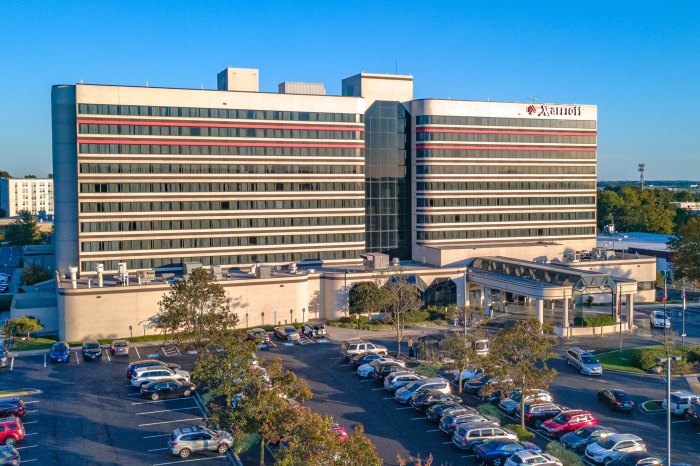
Source: brightspotcdn.com
In conclusion, Marriott International’s success stems from its ability to adapt to evolving market demands while maintaining its core values. The company’s strategic use of technology, focus on financial performance, and commitment to sustainability position it as a formidable force in the global hospitality industry. Marriott’s future success will likely hinge on its continued ability to innovate, maintain financial strength, and uphold its reputation for exceptional service.


